If you're a cannabis enthusiast or a beginner exploring the world of cannabis, you may have come across the terms "Sativa" and "Indica." These are two main types of cannabis plants that have distinct characteristics and effects. Understanding the differences between Sativa and Indica can help you make informed choices when selecting strains for your preferences and needs.
In this blog, we'll explore the key differences between Sativa and Indica, including their physical characteristics, effects, and terpene content. Let's dive into the fascinating world of Sativa vs. Indica and unravel how they differ!
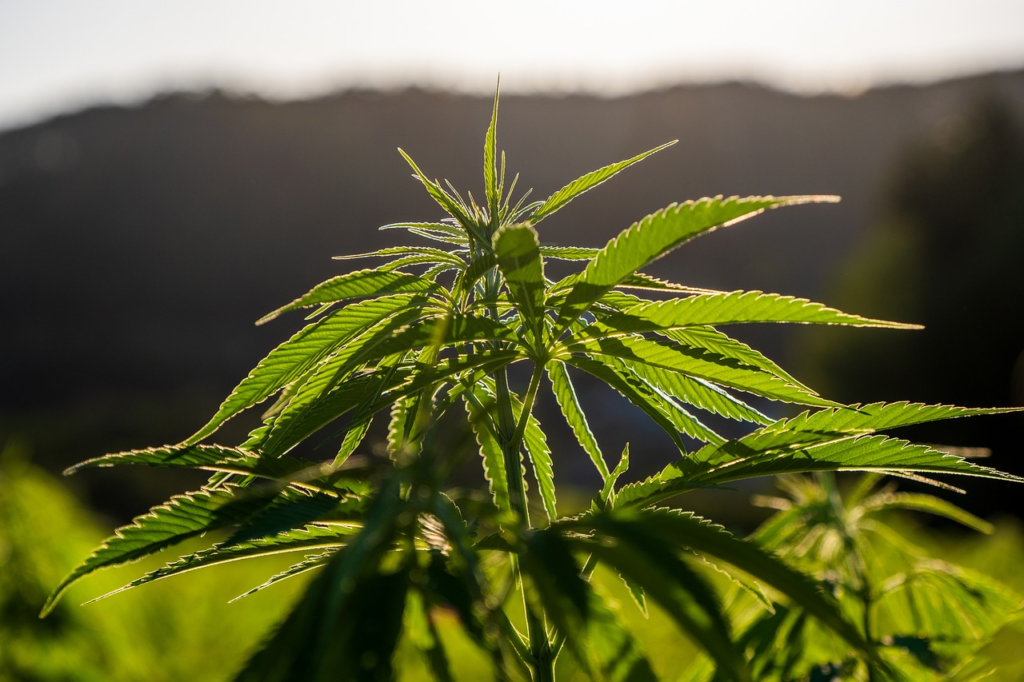
Sativa strains are believed to have originated in equatorial regions, such as parts of Africa, Southeast Asia, and South America. Historically, Sativa plants were cultivated for their fiber, seeds, and medicinal properties. Sativa strains are known for their tall and thin plants with narrow leaves, and they are often associated with uplifting and energizing effects.
Indica strains are believed to have originated in the Hindu Kush region of the Indian subcontinent. Indica plants are typically shorter and bushier with wider leaves, and they are known for their sedating and relaxing effects. Indica strains were historically used for their medicinal properties, including pain relief and relaxation.
Over time, cannabis cultivation and hybridization have resulted in a wide range of Sativa, Indica, and hybrid strains with varying characteristics. Today, the terms Sativa and Indica are commonly used to categorize cannabis strains based on their purported effects and physical traits, although the scientific validity of these classifications is debated.
Understanding the historical origins and evolution of Sativa and Indica can provide a foundation for further exploration of their differences in terms of plant morphology, effects, medicinal properties, growing requirements, aroma and flavor profiles, and popular strains. Cannabis laws and regulations vary by region, and it's essential to comply with local laws when growing, using, or discussing cannabis-related topics.
The physical characteristics of Sativa and Indica cannabis strains can vary significantly, providing valuable clues for identifying and differentiating between them. Understanding these differences can help cannabis enthusiasts and growers recognize the unique traits of each subspecies.
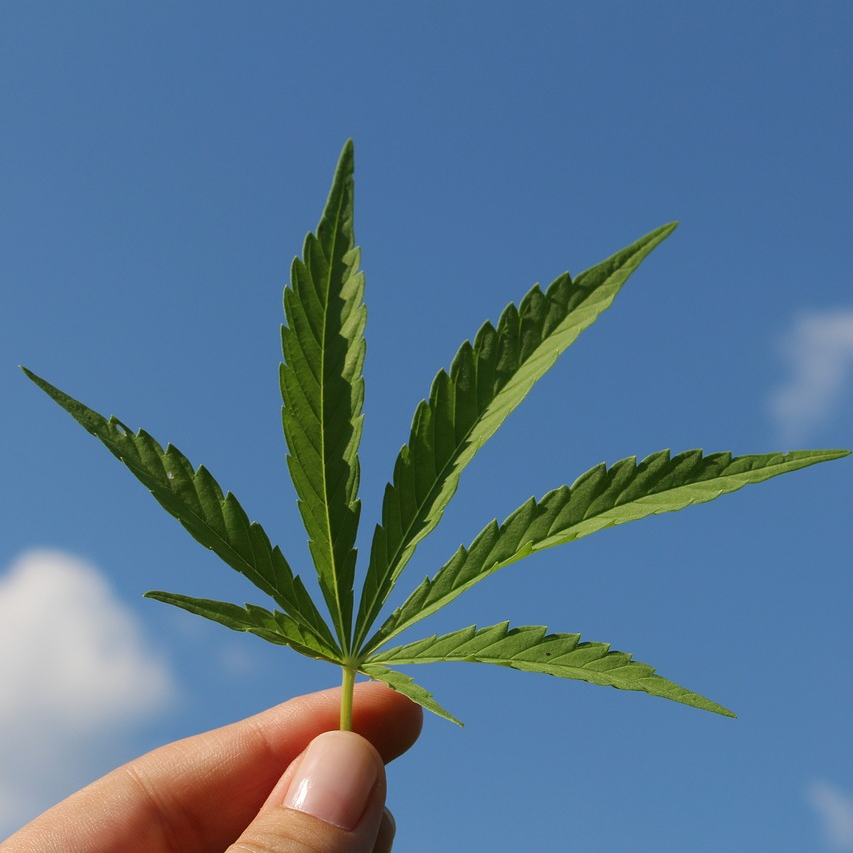
Sativa plants are known for their tall and thin structure, with long branches and narrow leaves. Sativa leaves tend to have more space between each leaflet, giving them a feathery appearance. Sativa strains can reach heights of up to 20 feet or more in some cases, making them ideal for outdoor cultivation in regions with longer growing seasons. Sativa buds are typically less dense and have a looser structure, with longer and thinner buds.
In contrast, Indica plants are generally shorter and bushier, with shorter branches and wider leaves. Indica leaves tend to be broader and thicker compared to Sativa leaves, and the leaflets are often closely spaced. Indica strains are well-suited for indoor cultivation due to their compact size and shorter flowering times. Indica buds are typically denser and have a tighter structure, with shorter and thicker buds.
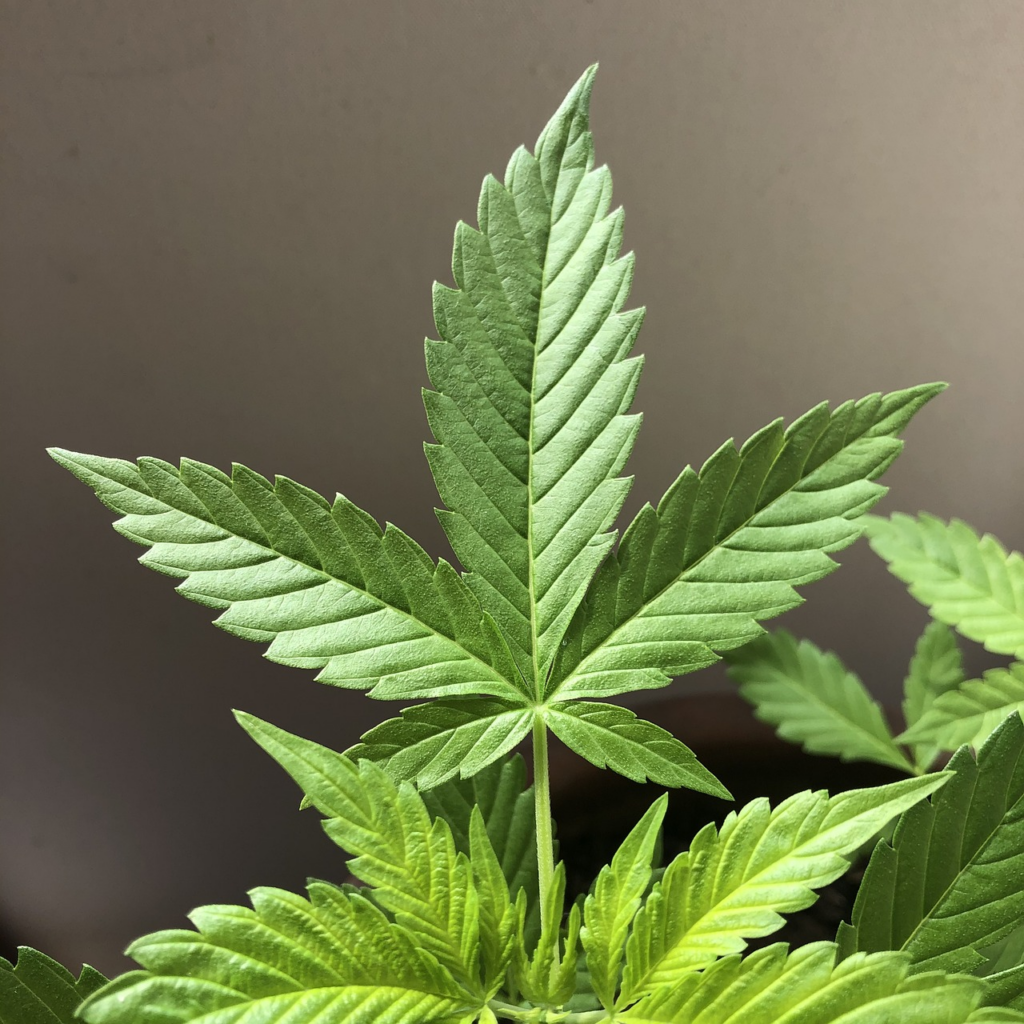
Another factor that can influence the effects of Sativa and Indica strains is the climate in which they are grown. Sativa strains are typically associated with a warm and dry climate, such as those found in tropical regions, while Indica strains are often found in dry and cooler climates.
The distinction between Sativa and Indica strains may not always be clear-cut, as many cannabis strains today are hybrids that exhibit a combination of traits from both subspecies. Consulting reputable sources and conducting genetic testing can provide more accurate information about the genetic makeup of a particular cannabis strain.

The effects and highs produced by Sativa and Indica cannabis strains can vary significantly, offering distinct experiences for users.
Terpene content, or the aromatic compounds found in cannabis plants, can play a significant role in the effects of Sativa and Indica strains.
Sativa strains tend to have higher levels of certain terpenes that can produce a more uplifting and energizing effect, while Indica strains may contain different terpenes that can promote more calming and sedative effects.
When it comes to sativa effects, these strains are often favored for their uplifting and stimulating effects, making them popular for daytime use. Sativa products, such as flower, concentrates, and edibles, are commonly found in marijuana dispensaries and are sought after for their ability to provide increased focus, creativity, and sociability.
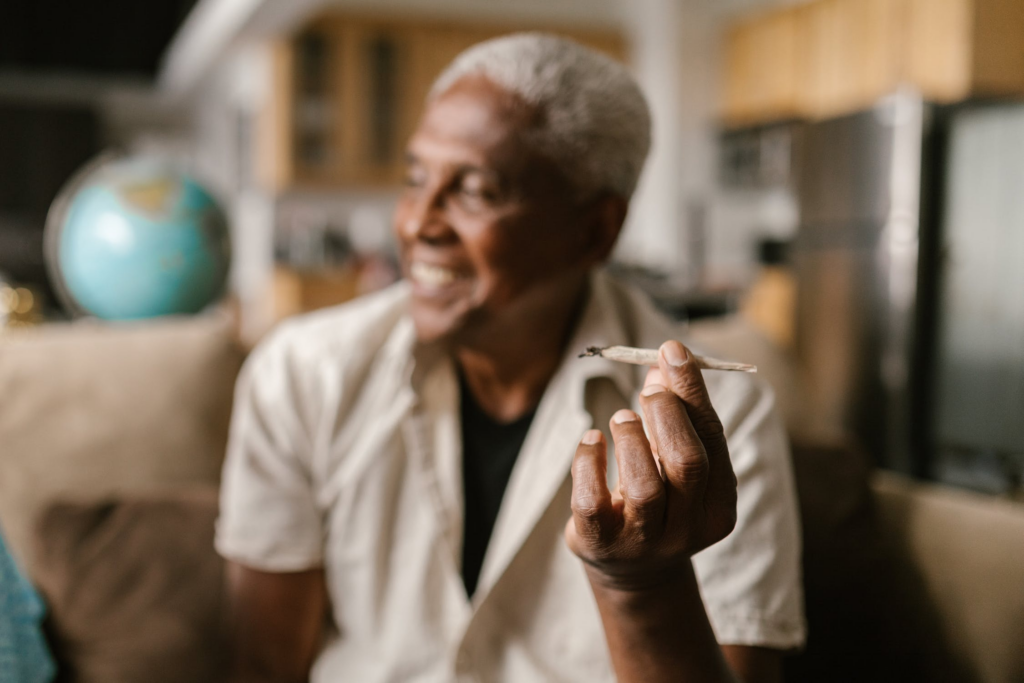
Indica strains are typically associated with calming, relaxing, and sedating effects. They are known to induce deep relaxation, promote sleep, and relieve stress and anxiety. Indica strains are often preferred for evening or nighttime use, or for relaxation and stress relief purposes.
Indica strains are known for their calming effects and are often used for relaxation and stress relief. Indica strains can be beneficial for managing conditions such as muscle pain, insomnia, and anxiety due to their sedative effects. Indica products are also commonly used for promoting appetite and alleviating appetite loss.
It's important to note that the effects of Sativa and Indica strains on the human body can vary depending on individual tolerance, dosage, and other factors. While there is scientific evidence supporting some of the common effects attributed to Sativa and Indica strains, it's also important to consider that the psychoactive effects of cannabis can be subjective and vary from person to person.
Like any substance, cannabis can have potential negative side effects. Sativa strains, known for their intense effects, may not be suitable for everyone and may cause negative effects such as anxiety, paranoia, or increased heart rate. Indica strains, with their sedative effects, may cause drowsiness or impaired coordination in some individuals.
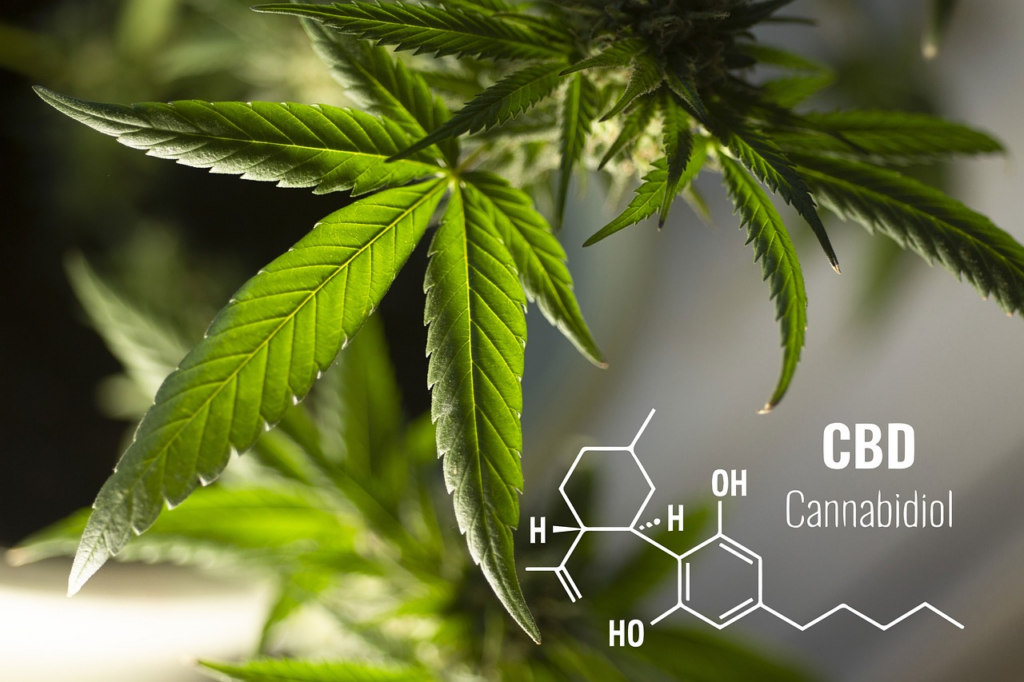
Both Sativa and Indica are known for their therapeutic properties, but they can offer distinct benefits due to their differing characteristics.
Sativa strains are often associated with uplifting and energizing effects, which can make them beneficial for managing conditions such as depression, fatigue, and mood disorders. Sativa strains are also known for their potential to enhance creativity, focus, and sociability, making them suitable for those seeking relief from symptoms of ADHD, PTSD, or social anxiety.
Indica strains are typically associated with calming and relaxing effects, which can make them useful for managing conditions such as anxiety, stress, and insomnia. Indica strains are also known for their potential to provide pain relief, muscle relaxation, and anti-inflammatory effects, making them suitable for those seeking relief from conditions such as chronic pain, muscle spasms, and arthritis.
Furthermore, both Sativa and Indica strains can contain varying levels of cannabinoids and terpenes, which can further influence their therapeutic effects. For example, Sativa strains may be higher in THC, which can provide euphoric effects, while Indica strains may be higher in CBD, which can provide anti-inflammatory and analgesic effects.
The therapeutic benefits of Sativa and Indica strains can vary depending on the individual and their specific health needs. Consulting with a healthcare professional and experimenting with different strains and dosages can help individuals find the strain that best suits their therapeutic needs.
The aroma and flavor profiles of cannabis strains can offer a unique sensory experience, with Sativa and Indica strains often displaying distinct differences.
Sativa strains are known for their uplifting and energetic effects, and their aroma and flavor profiles often reflect this. Sativa strains tend to have a more citrusy, fruity, and sweet aroma, with notes of lemon, pine, and tropical fruits. The flavor profile of Sativa strains can be described as bright, tangy, and refreshing, with hints of citrus, herbs, and spices.
Indica strains are typically associated with calming and relaxing effects, and their aroma and flavor profiles can differ from Sativa strains. Indica strains often have a more earthy, musky, and skunky aroma, with notes of pine, spice, and herbs. The flavor profile of Indica strains can be described as rich, deep, and savory, with hints of earthy, woody, and sweet flavors.
The aroma and flavor profiles of cannabis strains can also be influenced by various factors, including cultivation methods, terpene profiles, and curing processes. Additionally, individual perception and preference for aroma and flavor can vary. Experimenting with different strains and paying attention to the aroma and flavor profiles can add another layer of enjoyment to the cannabis experience for those who appreciate the sensory aspects of cannabis.
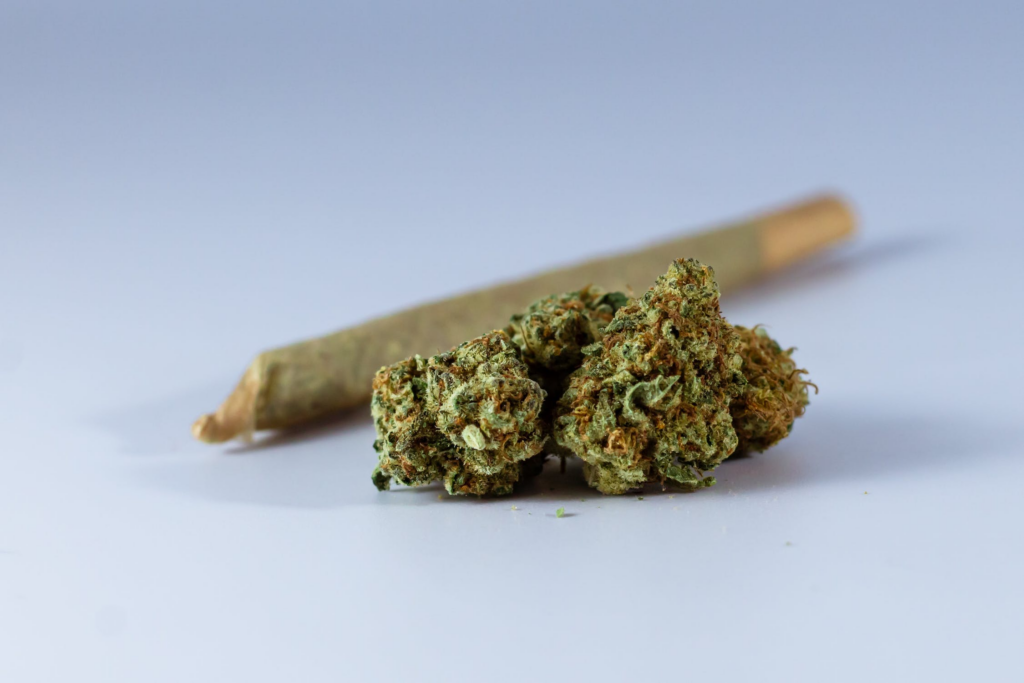
Indica strains such as Bubba Kush are known for their relaxing and sedative effects, making them a popular choice for those seeking relief from muscle pain, anxiety, and insomnia.
Sativa strains like Sour Diesel, Pineapple Express, and Blue Dream are often associated with uplifting and energizing effects, making them sought-after options for those looking for increased creativity, focus, and mood elevation.
Whether you're a fan of the calming effects of Indica or the invigorating effects of Sativa, there are numerous strains to choose from to suit your preferences and needs at marijuana dispensaries. It's essential to do your research and consult with knowledgeable budtenders to find the right strain that aligns with your desired effects and overall experience.
In conclusion, Sativa and Indica strains of cannabis offer distinct effects that can be beneficial for different purposes. The effects of cannabis can vary depending on individual factors and consulting with a healthcare professional or budtender at a marijuana dispensary can provide personalized guidance.
Exploring the history, physical characteristics, effects, and aroma/flavor profiles of Sativa and Indica strains can help you make informed choices when selecting cannabis strains that align with your preferences and health needs. Consulting with a healthcare professional and experimenting with different strains can also aid in finding the right strain for your individual requirements.
If you're looking to experience the diverse world of Sativa and Indica strains, visit DC Collective, a trusted cannabis dispensary. With a wide selection of premium cannabis products, knowledgeable staff, and a commitment to quality, DC Collective is your destination for top-notch cannabis strains and a personalized cannabis experience.
Ready to explore the world of Sativa and Indica strains? Visit DC Collective, your premier cannabis dispensary, to discover a wide selection of high-quality cannabis products. Whether you're a seasoned cannabis enthusiast or new to the world of cannabis, our knowledgeable staff is here to assist you in finding the perfect strain for your needs. Don't miss out on the diverse and unique characteristics of Sativa and Indica cannabis strains - visit DC Collective today!
Microdosing is quickly becoming one of the most popular ways to consume cannabis. But what is microdosing and how do you start if you’re a beginner? We’re answering these questions and more in this cannabis microdosing guide. We’ll explain what microdosing is, why people do it, and how to start, then share some recommendations for easy-to-use microdosing products for beginners.
What is Cannabis Microdosing?
Microdosing is the act of consuming small amounts of cannabis. The idea behind microdosing is that consuming tiny amounts of marijuana can give you the benefits of cannabis while reducing the risk of unwanted side effects. Some people take microdoses of cannabis as needed or desired, while others consume a daily dose like a supplement.
What Counts as a Microdose?
Anything below 10 mg of THC can be considered a microdose, but microdose products typically range from 1 mg to 5 mg of THC per dose.
What’s the Point of Microdosing?
The point of microdosing is to get the beneficial effects of cannabis without experiencing other effects. People may want to avoid feeling strong psychoactive effects or the adverse side effects associated with potent doses of marijuana, such as dry mouth or fatigue.
Microdosing is also a great option for beginner consumers who are new to cannabis. Microdosing offers an excellent entrypoint into using marijuana, as it allows you to easily experiment and find your ideal dose.
What Are the Benefits of Microdosing?
Some research has shown that lower doses of THC may have more benefits when used in lower doses. A 2017 study on the effects of marijuana on mental health found that while THC causes anxiety in high-dose conditions, it decreases anxiety at low-dose conditions. A 2012 study found that cancer patients in clinical settings who took the lowest doses of nabiximols, a THC/CBD compound, had less pain than those who took higher doses. A 2014 study found that low doses of Nabilone, a synthetic form of the active compounds in cannabis, reduced symptoms of PTSD, including insomnia, nightmares, and chronic pain.
Who Uses Low-Dose Cannabis Products?
People microdose for a variety of reasons, so a wide variety of people use low dose cannabis products. We’ve already mentioned that microdosing is popular with beginner cannabis consumers. Then, it’s also popular with medical marijuana patients and a range of more experienced recreational consumers.
Microdosing is common among cannabis patients who use marijuana for medical benefits like pain relief. Consuming small doses of cannabis allows patients to get relief for their condition, while also allowing them to go about their day without experiencing psychoactive or negative effects.
Experienced cannabis consumers sometimes use microdosing as a way to get the benefits of cannabis more regularly or as a way to reset their tolerance. Over time, the body can develop a tolerance to the cannabinoids in cannabis, but microdosing can help heavy smokers reset their system.
It’s worth noting that microdosing has been a very popular trend among workers in certain industries, including creative industries and tech workers in the Silicon Valley community. Some workers consider microdoses of various psychoactive and psychedelic substances to be a tool for productivity, creativity, and general cognitive enhancement. In those communities, it’s popular to microdose with both magic mushrooms and cannabis.
How Do You Microdose Cannabis?
The easiest way to microdose cannabis is by using low-dose cannabis edibles. Microdosing with other methods requires investing in a high quality scale and still having to rely on guesswork. But pre-packaged edible products from a dispensary allow you to easily take the exact mg dose you desire.
How Do You Find Your Optimal Dose?
When you first start microdosing, it’s best to start low and go slow. Anything under the standard dose of THC (10 mg) is considered microdosing, but beginners should usually start much lower than that. A general rule of thumb is to start by taking 2.5 milligrams a day for three days. Then, if you don’t feel your desired effect, go up a couple of milligrams for the next few days. Repeat as needed until you find your ideal normal dose.
Microdosing Products For Beginners
With precisely 2.5 mg of THC in each mint, these refreshing mints are perfect for microdosing beginners.
These low-dose gummies feature indica-like terpenes for a relaxing effect.
For those who want to microdose without having a snack, these THC soft gels are an ideal choice.
Break off a piece of this delicious milk chocolate bar for a customized THC microdose.
Final Thoughts
Need help finding the right microdosing product for you? Stop by one of our dispensary locations or contact us by phone or email.

Cannabis flower is available in various quantities, ranging from small measurements like grams of cannabis to a full ounce of cannabis. Understanding the different measurements is crucial when it comes to purchasing cannabis flower. This complete guide to cannabis flower is designed to provide an overview of the different measurements available and offer tips for checking the quality and prices of cannabis products.
This complete guide to cannabis flower not only covers the different measurements available but also delves into the potential health benefits and risks associated with cannabis use. Cannabis has been studied for its potential therapeutic effects on various medical conditions, such as chronic pain, anxiety, and epilepsy. It's important to note that while cannabis may have potential benefits, there are also potential risks and adverse effects to consider.
Additionally, this guide provides valuable information on the various cannabis strains and their effects. With so many strains available in the market, it's essential to understand the different characteristics and effects of each strain. By knowing this information, you can choose the strain that best suits your needs and preferences. Whether you're looking for a strain to help with anxiety or one to boost creativity, this guide has got you covered.
Whether you're a seasoned cannabis user or a novice, this complete guide to cannabis flower will provide you with the information and guidance you need to make informed decisions when purchasing cannabis products. By understanding the different measurements, quality, prices, and strains available, you can ensure that you're getting the best possible experience from this versatile and potentially therapeutic plant.

A gram of weed is the smallest and most common unit of measurement in the cannabis industry. It's a convenient and cost-effective way to try out new strains or to use for personal consumption. While it may seem like a small amount, a gram of weed can provide a satisfying experience and is an excellent starting point for those new to cannabis.
One of the benefits of a gram of cannabis is that it allows you to try out different strains without committing to a larger purchase. With the abundance of strains available in the market, a gram of weed can help you explore and experiment with various strains to find the one that suits your preferences and needs the best.
Moreover, a gram of cannabis can typically fill up one or two small bowls, making it perfect for personal consumption. It's an ideal amount for those who prefer to consume cannabis in small doses or who want to keep their tolerance level in check. Additionally, a gram of weed can be used in a variety of consumption methods, including smoking, vaping, or even cooking.
However, it's important to note that the effects of a gram of weed may vary depending on the strain and the individual's tolerance level. Some strains may have a higher THC content, leading to a more potent experience, while others may have a lower THC content, resulting in a milder experience. It's essential to understand the potency of the strain you're purchasing and to consume responsibly to avoid any adverse effects.
An eighth of weed, also known as a "slice," is a common unit of measurement in the cannabis industry, equivalent to 3.5 grams. It's a popular choice for recreational use and is ideal for those who want to stock up on a moderate amount of cannabis without committing to a larger purchase.
An eighth of weed is typically enough to last for a few sessions, depending on how much you consume. It's an excellent option for those who enjoy smoking or vaping with friends or prefer to use larger amounts of cannabis per session. Moreover, an eighth of weed can be used in various consumption methods, including rolling joints, packing bowls, or even making edibles.
Aside from recreational use, an eighth of weed can also be used for medicinal purposes. Many medical cannabis patients use this measurement to manage their symptoms and improve their quality of life. For example, an eighth of weed can provide relief for those experiencing chronic pain, anxiety, or insomnia.
A quarter of weed, also known as a "quad," is an excellent measurement for those who enjoy sharing their cannabis experience with friends or use weed regularly. It's equivalent to 7 grams, making it a cost-effective way to purchase larger quantities of weed without committing to an entire ounce.
A quarter of weed is ideal for those who enjoy smoking or vaping larger amounts of cannabis in one session. It's also a great option for those who prefer to have a steady supply of cannabis on hand for their personal use. It can typically provide between 14 to 28 sessions, depending on how much you use per session.
One of the advantages of purchasing a quarter of weed is that it often comes at a lower price per gram than in smaller quantities. This makes it a great option for those who use cannabis regularly and want to save money on their purchases. Additionally, buying a quarter of weed can be more convenient than buying smaller amounts as it reduces the need for frequent trips to a dispensary or delivery service.
It's important to note that different strains of cannabis may have different potencies and effects. It's essential to check the quality and prices of the product before making a purchase to ensure that you're getting the best value for your money.
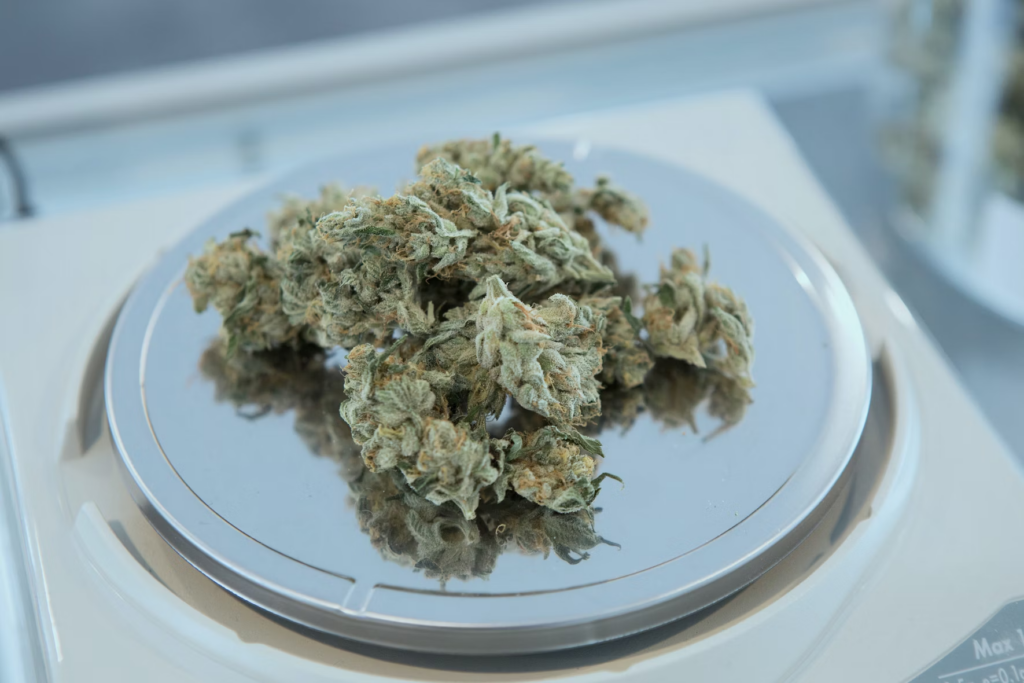
A half of weed, also known as a "half-ounce," is a significant amount of cannabis that can provide a steady supply for those who use weed regularly or for parties and events. It's equivalent to 14 grams, making it a more cost-effective way to purchase larger quantities of weed than buying smaller amounts.
For those who use cannabis regularly, a half of weed can last for several weeks or even months, depending on how much they use per session. It's a great way to save money on cannabis purchases in the long run by buying in bulk. Additionally, it reduces the need for frequent trips to a dispensary or delivery service, making it a convenient option for those who want to stock up on cannabis.
A half of weed is also an ideal measurement for parties or events where multiple people will be using cannabis. It provides enough cannabis to share with friends and can make for a memorable experience. However, it's important to note that sharing cannabis is not legal in all states and it's essential to check the local laws before doing so.
It's crucial to check the quality and prices of the product before making a purchase to ensure that you're getting the best value for your money. Different strains of cannabis may have different potencies and effects, so it's important to choose the right one for your needs.
An ounce of cannabis is a significant amount of cannabis and is equivalent to 28 grams. It's a measurement that's commonly used by dispensaries and cannabis businesses that operate on a larger scale. An ounce of weed can last for a considerable amount of time, making it a cost-effective option for those who use cannabis regularly or for medical purposes.
Purchasing an ounce of weed can also be a convenient option for those who don't want to make frequent trips to a dispensary or delivery service. However, it's essential to check the quality and prices of the product before making a purchase to ensure that you're getting the best value for your money. Different strains of cannabis may have different potencies and effects, so it's important to choose the right one for your needs.
On an even larger scale, a pound of weed is equivalent to 16 ounces or 448 grams. This measurement is typically used by larger cannabis businesses or operations that require large quantities of cannabis for production purposes. It's not a measurement that's commonly used by individual users or for personal consumption, but it's an important unit of measurement within the cannabis industry.
Whether you're purchasing an ounce of weed or a pound of weed, it's important to understand the potential health benefits and risks associated with cannabis use. While cannabis can be a valuable tool for managing medical conditions, it can also have adverse effects if not used responsibly. It's essential to consult with a healthcare professional before using cannabis to treat a medical condition and to be aware of the potential risks.
In conclusion, an ounce of weed and a pound of weed are two important units of measurement within the cannabis industry. They're typically used by dispensaries, larger cannabis businesses, or operations that require large quantities of cannabis for production purposes. While purchasing in bulk can be a cost-effective option, it's important to check the quality and prices of the product before making a purchase to ensure that you're getting the best value for your money.

When it comes to purchasing cannabis products, it can be helpful to consult with a budtender. These individuals are typically employed by dispensaries and have extensive knowledge about different strains of weed, as well as their effects and potential medicinal benefits. They can help you navigate the sometimes overwhelming variety of cannabis products available and assist you in selecting the right measurement for your needs.
Budtenders can be especially helpful when it comes to selecting the appropriate strain of cannabis for a particular medical condition. For example, certain strains of cannabis may be more effective in treating chronic pain, anxiety, or depression. A budtender can guide you through the process of selecting the right strain for your particular needs, as well as help you determine the appropriate measurement.

Checking the label is especially important if you're purchasing cannabis products for medical purposes, as the right dosage can be critical for treating certain conditions. It's important to make sure that you're getting the correct amount of cannabis so that you can achieve the desired effects and experience the potential medicinal benefits.
In addition to ensuring that you're getting the right measurement, checking the label can also help you compare prices and make informed purchasing decisions. By knowing the exact amount of weed in a particular product, you can calculate the price per gram or ounce and compare it to other products or dispensaries.
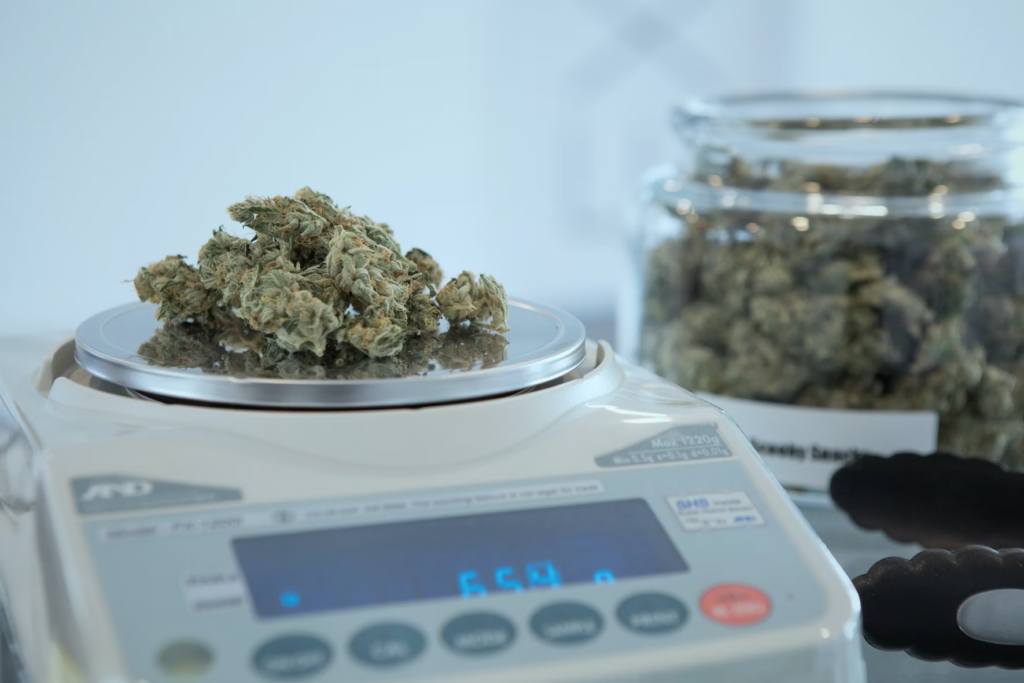
If you're looking to ensure that you're getting the right measurement of weed, investing in a scale can be a wise choice. While most dispensaries label their products with the correct measurements, it's always a good idea to double-check to make sure you're getting what you paid for.
Using a digital scale is an easy and accurate way to weigh your weed. It's important to note that not all scales are created equal, and some may be more precise than others. Look for a scale that measures to at least one decimal point, such as 0.1 grams, to ensure that you're getting an accurate reading.
A scale can also help you manage your usage and avoid overconsumption, which can lead to adverse effects. By weighing out the right amount of weed, you can ensure that you're consuming a consistent dosage and avoid accidentally consuming too much.
Additionally, a scale can be a helpful tool for those who use cannabis for medical purposes. For example, if you're using cannabis to manage a specific medical condition, it may be important to consume a precise amount of cannabis to achieve the desired effects.
Overall, investing in a scale is a small but important step in ensuring that you're getting the right measurement of weed and consuming cannabis safely and responsibly.
If you're considering using cannabis for a medical condition, it's important to be aware of potential adverse effects and to consult with a healthcare provider before trying any treatments. However, research suggests that cannabis may have therapeutic potential for a range of conditions, from chronic pain to epilepsy to anxiety.
While some studies have shown that cannabis use may be associated with increased risk for certain diseases and conditions, other research suggests that it may have therapeutic potential for treating certain symptoms and improving quality of life. However, it's important to be aware of the potential adverse effects of cannabis use, such as impaired cognitive function and respiratory problems.
Weed measurements are an important part of purchasing and consuming marijuana. Whether you're a recreational user or using it for medical purposes, it's important to understand the different measurements and how to check them. By following these tips, you can make sure you're getting the right amount of weed and getting the most out of your purchase.
If you're interested in purchasing cannabis products, DC Collective is a reputable online service that offers convenient delivery options. It's important to ensure that you're getting the correct measurements and strains for your needs, and DC Collective can provide you with the right information and guidance to make informed decisions. With the potential therapeutic benefits of cannabis, including managing medical conditions and improving overall health and well-being, it's essential to purchase from a trustworthy source like DC Collective to ensure the highest quality and safety standards.
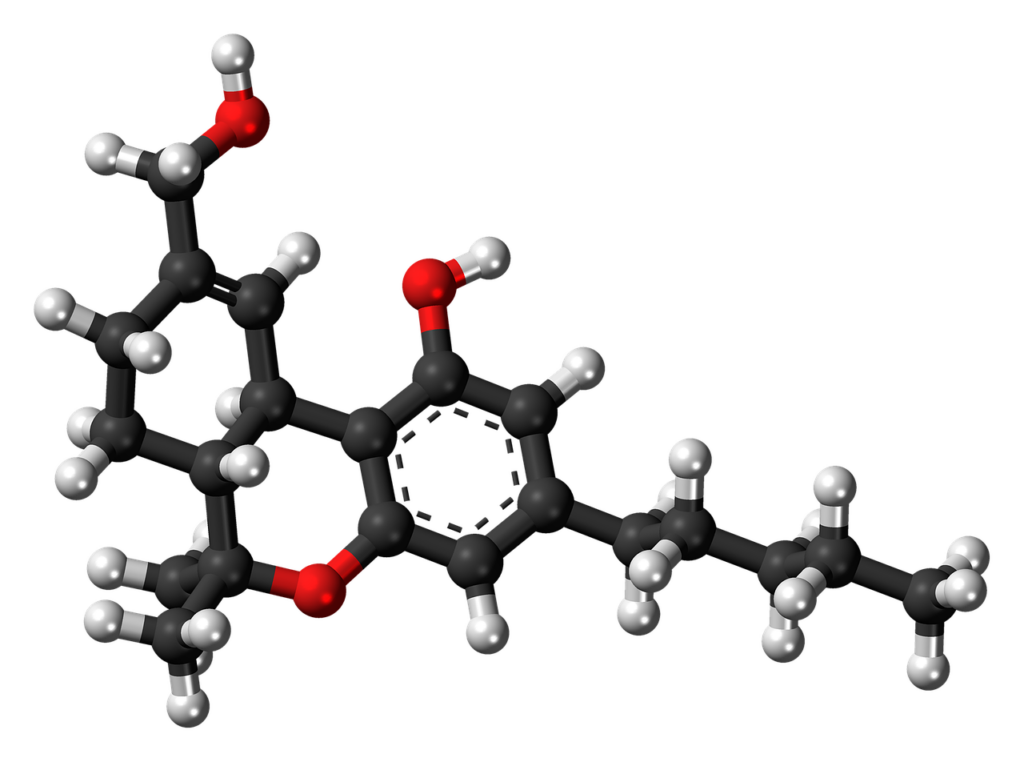
THC, also known as tetrahydrocannabinol, is the most well-known and most abundant psychoactive compound found in the cannabis plant. THC is responsible for producing the euphoric and psychoactive effects commonly associated with marijuana use. Its chemical structure is similar to the endocannabinoids produced naturally by the human body, which are involved in regulating a variety of physiological processes.
Since its discovery in the 1960s, THC has been the subject of extensive research, particularly in the areas of medicinal and therapeutic use. It has been found to have a wide range of potential medical applications, including pain relief, nausea and vomiting reduction, appetite stimulation, and reduction of muscle spasms in patients with multiple sclerosis.
THC is just one of many cannabinoids found in the cannabis plant that can have a range of effects on the body and mind. While it can offer therapeutic benefits for those with chronic pain and certain medical conditions, it can also have adverse health effects, particularly when used in excess or by those who are sensitive to its effects.
The legal status of THC-containing products varies greatly by jurisdiction. While some countries and states have legalized both medical and recreational use of marijuana, others have strict laws prohibiting its use or only allow it for medical purposes with a prescription. It is important to research and understand the laws in your area before using any THC-containing products.
Read on to learn about what exactly THC is as well as the different types that exist and their individual benefits.
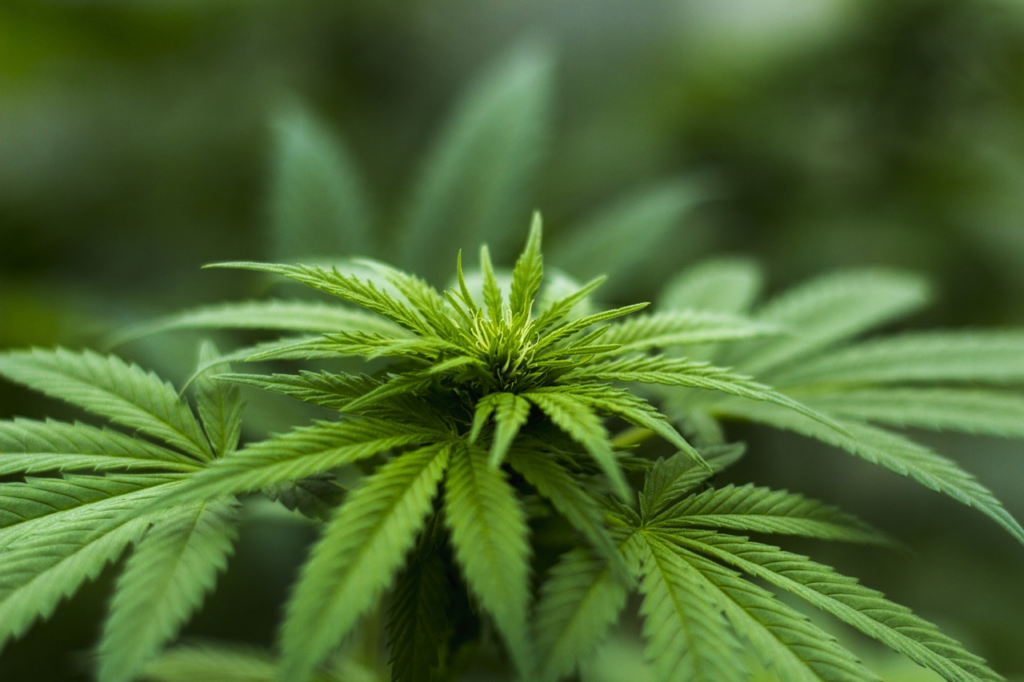
The cannabis plant is known for containing a diverse array of chemical compounds, including cannabinoids. These compounds interact with the body's endocannabinoid system, producing various physiological effects. THC is one such cannabinoid, and it has been the subject of extensive research due to its psychoactive properties.
People often consume THC through smoking or vaporizing cannabis, as well as ingesting cannabis-infused products like edibles or tinctures. The effects of THC on the body can vary depending on several factors, including the method of consumption, dosage, and individual tolerance.
It is important to note that while THC can offer therapeutic benefits, it can also pose risks, particularly when used in excess or by individuals who are sensitive to its effects. As such, the legal status of THC-containing products varies by jurisdiction, with some areas legalizing both medical and recreational use, while others maintain strict prohibitions.

The effects of cannabis can vary widely depending on factors such as dosage, method of consumption, and individual tolerance. It is important to be aware of the potential adverse events related to THC use, particularly in cases of cannabis use disorder or when consumed in excess.
Medical cannabis laws in some jurisdictions allow for the use of cannabis-derived products containing THC to treat conditions such as neuropathic pain and abdominal pain. However, it is important for healthcare providers to be aware of the potential adverse effects of THC and to monitor their patients accordingly.
However, it is important to note that excessive use or misuse of THC can lead to negative outcomes. Those with cannabis use disorder or those who consume THC in excess are more likely to experience adverse events such as anxiety, paranoia, hallucinations, and impaired cognitive function. Therefore, responsible use and adherence to recommended dosages are critical to avoid any potential negative consequences.
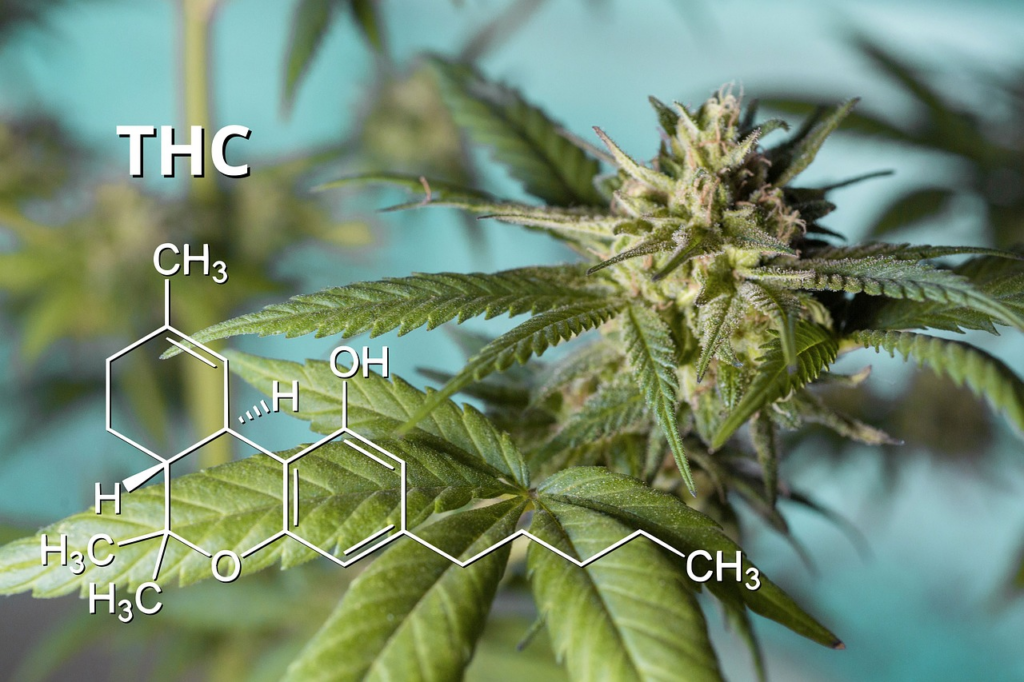
If you're new to the world of cannabis, it can be overwhelming to understand the different types of THC available. THC, or tetrahydrocannabinol, is the primary psychoactive compound found in cannabis plants that produces the "high" associated with marijuana use. But did you know that there are several different types of THC?
Delta-9 THC is the most talked-about variation of THC found in cannabis plants. It is abundant in both male and female plants, but more concentrated in the latter. This psychoactive compound binds with CB1 receptors in the brain and nervous system, resulting in altered mental and physical states such as disassociation from time, impaired memory, and relaxation of the body.
Despite its psychoactive properties, Delta-9 THC is being researched for its potential therapeutic benefits. Some of these health benefits include its ability to promote sleep, alleviate mood swings, reduce discomfort, and alleviate nausea or vomiting. Delta-9 THC is also known to stimulate appetite, making it helpful for those dealing with low appetite.
Delta-8 THC, a less abundant form of THC found in the cannabis plant, is gaining popularity in the cannabis industry. This compound is a double bond isomer of Delta-9 THC, which means that they have the same elements and atoms, but are structurally distinct. Delta-8 THC forms when Delta-9 THC ages and is exposed to oxidation.
Although Delta-8 THC is believed to produce a more clear-headed and energetic effect compared to Delta-9 THC, it is still considered to have similar psychoactive effects. Delta-8 THC interacts with the CB1 and CB2 cannabinoid receptors in the body and has been shown to have several potential benefits, such as pain relief and anxiety reduction.
However, due to its low concentration in the cannabis plant, most commercially available Delta-8 products are made by converting Delta-9 THC or cannabidiol (CBD) chemically. As a result, there are limited studies on the effects and safety of Delta-8 THC products. It is important to note that although Delta-8 THC is federally legal, the sale of Delta-8 products is not regulated by the FDA, which may pose a risk for consumers.
Delta-10 THC is a lesser-known cannabinoid that shares similar chemical properties as THC but is arranged differently, resulting in distinct effects. Unlike delta-9 THC, delta-10 THC occurs in extremely low amounts in the cannabis plant, making it difficult to consume high doses directly. Due to its rarity, most delta-10 products are synthetically developed in labs.
Delta-10 THC is classified as a minor cannabinoid, similar to delta-8 THC, and researchers have conducted little research on its effects on the body. As a result, the potential benefits and adverse effects of consuming delta-10 THC are still largely unknown. Further research is necessary to fully understand the potential of delta-10 THC as a therapeutic compound.
THCA is a type of THC that does not produce any mind-altering effects and is usually found in the stems, leaves, and flowers of the cannabis plant. Unlike other forms of THC, THCA's structure is not suited for CB1 receptors in the nervous system, which are responsible for psychoactive effects.
However, THCA can be transformed into other types of THC, such as THCV, Delta-8 THC, and Delta-9 THC, through a process that involves applying heat. This transforms the chemical composition of THCA molecules and makes them suitable to fit into the CB1 receptors in the body, producing therapeutic benefits.
Studies suggest that THCA may help alleviate conditions such as nausea and loss of appetite, epilepsy, arthritis, and inflammation in muscles, and diabetes. While more research is needed to fully understand THCA's therapeutic potential, it is a promising area of study in the cannabis industry.
THCV is a lesser-known type of THC that is produced through the breakdown of THCA during the process of decarboxylation, which occurs when medical marijuana is dried and vaporized. Although it is not well-known, it is gaining popularity for its positive effects.
Research suggests that THCV has a shorter chain of molecules and lower interaction with receptors, meaning that it does not produce mind-altering effects in low doses. However, higher doses can produce a clear and stimulating high. THCV interacts with the CB1 receptors in the body, but the effects are short-lived compared to other THC types. Unlike other types of THC, THCV is an appetite suppressant and does not stimulate the appetite.
Studies show that THCV may offer benefits such as regulating blood sugar and insulin resistance, neurological therapeutics for epilepsy and Alzheimer's, promoting bone development and growth, and reducing chronic pain and inflammation.
THCP, or tetrahydrocannabiphorol, is a newly discovered cannabinoid that has garnered attention due to its unique properties. It is believed to have 33 times the binding affinity for CB1 receptors as delta-9 THC, resulting in a more intense and euphoric effect.
The length of the side chains in a compound determines its ability to bind with receptors, and THCP has a seven-link side chain, which is the longest of any naturally occurring cannabis compound. This makes THCP structurally similar to delta-9 THC, but with a different arrangement of elements.
Currently, THCP exists in a legal grey area, much like delta-8 and delta-10 THC. There is a need for further research to fully understand the potential benefits of this compound.
THC-O acetate, also known as THC-O, is a synthetic cannabinoid derived from hemp. One of its primary advantages is that it is created from federally legal hemp, in contrast to THC, which is only legal in some states. However, the production of THC-O-acetate involves using a highly flammable chemical called acetic anhydride. Like THCP and Delta-10 THC, THC-O is one of the least studied THC analogs, so its potential advantages and side effects have yet to be discovered.

The sale of cannabis and access to cannabis-based products, including cannabinoid products, cannabis oil, and cannabis accessories, are subject to various regulations and restrictions. It is important to understand the definition of marijuana in your jurisdiction and to comply with all applicable laws and regulations.
The National Institute on Drug Abuse has compiled a list of medical conditions for which cannabis-based products, including those containing THC, may be helpful. However, it is important to consult with a healthcare provider before using these products and to be aware of the potential adverse effects.
In conclusion, choosing the right THC product requires careful consideration of several factors, including personal preference, tolerance, and intended use. With the vast array of products available, it can be overwhelming to make a decision. However, taking the time to research and ask for recommendations can make the process easier and ensure a more enjoyable experience.
DC Collective is one example of a reputable dispensary that offers a wide selection of THC products and knowledgeable staff to assist customers in selecting the right product for their needs. By following the tips outlined in this guide and seeking guidance from experts, consumers can make informed decisions and have a positive experience with THC products.

Understanding THC dosage is crucial before consuming any cannabis product. THC, or tetrahydrocannabinol, is the primary psychoactive compound found in the cannabis plant that is responsible for the high associated with cannabis use. However, the effects of THC can vary depending on factors such as the individual's tolerance, the method of consumption, and the potency of the product.
Starting with a low THC dose is essential to ensure that one does not consume too much too quickly, resulting in potentially unpleasant effects such as anxiety, paranoia, or nausea. Gradually increasing the dosage until the desired effect is achieved can help prevent these adverse effects.
It is also important to be aware of the potential negative side effects that may occur with cannabis use, such as dry mouth, dizziness, or increased heart rate. If any of these effects become severe or persistent, it is important to seek medical attention immediately.
In addition, it is essential to speak with a medical professional before using THC products for medicinal purposes, particularly if you are taking other medications or have any pre-existing health conditions that may interact with cannabis.
Overall, understanding THC dosage and its potential effects is critical to ensure safe and responsible cannabis use. By starting with a low dose, being mindful of potential adverse effects, and seeking medical advice when necessary, individuals can enjoy the benefits of cannabis without experiencing a bad trip.
When it comes to THC consumption, there are a wide variety of options available for individuals to choose from. Each method of consumption has its own unique set of advantages and disadvantages, and it is important to understand the differences to make an informed decision.
Ultimately, the best method of THC consumption will depend on individual preferences and needs. It is important to understand the advantages and disadvantages of each method and to obtain products from a reputable source to ensure safety and quality.

Cannabis edibles are a popular and discreet way to consume cannabis, as they come in a variety of forms, such as gummies, brownies, chocolates, and other baked goods. These products offer a convenient way to consume cannabis without the need for smoking or vaporizing, making them a great option for individuals who prefer not to inhale smoke or vapor.
One of the advantages of edibles is that they offer a longer onset time and a longer duration of effects compared to other methods of consuming cannabis. When consumed orally, the THC in cannabis must first pass through the digestive system before being absorbed into the bloodstream. This process can take anywhere from 30 minutes to 2 hours, depending on factors such as the individual's metabolism, the amount of food in their stomach, and the potency of the edible.
Once the THC is absorbed into the bloodstream, the effects of edibles can last for several hours, with some users reporting effects lasting up to 8 hours or more. This prolonged duration of effects can be both a benefit and a drawback, as it can provide a longer period of relief for individuals using cannabis for medicinal purposes, but it can also lead to overconsumption if the user is not careful.
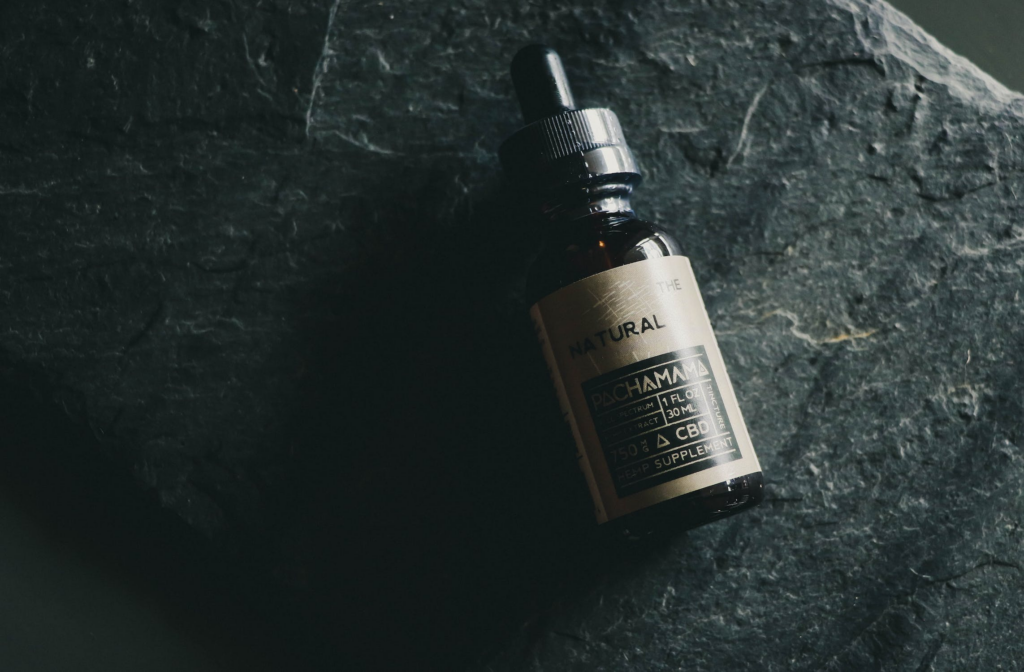
Tinctures are a type of liquid extract made from plant material, such as the cannabis plant. They have been used for centuries as a traditional herbal remedy, and today they are a popular option for individuals looking for an alternative way to consume cannabis.
One of the advantages of tinctures is their versatility. They can be taken sublingually, which means placing a few drops under the tongue and holding them there for a few seconds before swallowing. This method of consumption allows for fast absorption into the bloodstream, which can result in a faster onset time and a shorter duration of effects compared to other methods, such as edibles.
Tinctures can also be added to food and drinks, which makes them a convenient option for individuals who prefer to incorporate cannabis into their daily routine. They can be added to smoothies, teas, or other beverages, and can also be used in cooking and baking.

Extracts are a concentrated form of THC that can be added to food or vaporized for inhalation. They are made by extracting the THC from the cannabis plant using solvents such as butane, CO2, or alcohol. Extracts are known for their high potency and can provide a strong and immediate effect.
Infusions, on the other hand, are typically made by steeping cannabis in a liquid such as oil or butter. This allows the THC to be absorbed into the liquid, which can then be used to make edibles or added to food. Infusions tend to have a milder and longer-lasting effect compared to extracts.
Both extracts and infusions offer unique advantages and disadvantages, and it is important to consider which method will work best for you based on your preferences and needs. For example, extracts may be preferred by individuals looking for a more immediate and potent effect, while infusions may be a better option for those seeking a more gradual and long-lasting effect.
It is important to note that each form of consumption has its own unique properties and effects. Herbal tinctures, for example, may have a higher phenolic content compared to traditional tinctures, which can affect the stability of cannabinoids. Freeze-dried pooled extracts may have more neutral cannabinoids compared to fresh tinctures, which can affect their activity. Therefore, it is important to do research and consult with a medical professional before trying any new cannabis products to ensure they are safe and effective for your needs.

Calculating your ideal THC dosage requires careful consideration of several factors, including your tolerance level, body weight, the method of consumption, and the cannabinoid content of the product. For example, cannabis tinctures can have a faster onset of activity than edibles and may be more easily titrated to achieve the desired effect. It is important to start with a low dosage and gradually increase until the desired effect is achieved. Additionally, it is important to be aware that the potency of cannabis products can decrease over time with months of storage.
When it comes to edibles, the amount of time it takes for them to take effect can vary significantly. The onset time can be anywhere from 30 minutes to 2 hours, depending on factors such as metabolism and digestion. This slower onset makes it more difficult to determine the appropriate dosage than when using other forms of cannabis like smoking or vaping. It's recommended to start with a low dose of 2.5-5mg of THC and wait at least two hours before consuming more. This will give you time to assess the effects and determine if you need to increase the dosage.
For tinctures and other liquid extracts, dosing is usually measured in drops rather than milligrams. The number of drops needed can vary depending on the strength of the tincture and the desired effect. As a general rule, it's recommended to start with a low dose of 1-2 drops and gradually increase until the desired effect is achieved.
It's also important to keep in mind that THC dosage can be affected by various factors such as enzyme activity, acid content, and storage conditions. Proper storage of cannabis products can help to maintain the stability of cannabinoids, while exposure to air, light, or heat can lead to degradation and potentially negative side effects.
Ultimately, calculating your ideal THC dosage requires careful attention to your individual needs and responses. Consulting a medical professional or a knowledgeable budtender at a dispensary can also be helpful in determining the right dosage for your specific circumstances.

While THC and other cannabinoids can have many potential medicinal purposes, they can also have negative side effects, such as increased anxiety or paranoia. If you experience unwanted effects from THC consumption, it is important to have strategies in place to manage them. Some strategies may include breathing exercises, distraction techniques, or seeking medical attention if necessary.
One strategy for managing unwanted effects is through breathing exercises, such as deep breathing or meditation. These techniques can help to reduce anxiety and promote relaxation, which can help to alleviate some of the negative side effects of THC consumption. Other techniques may include distraction techniques, such as listening to music or engaging in a relaxing activity, or seeking medical attention if necessary.
It is important to note that if you are experiencing severe negative side effects, it is always recommended to seek medical attention immediately. This is especially important if you have a history of mental health issues, as THC consumption can potentially exacerbate these conditions. Always prioritize your safety and well-being when consuming THC products.
When it comes to dosing, it is important to start with a small amount and work your way up. Beginners should aim for a maximum of 10mg of THC per dose, while more experienced THC consumers can increase their dosage up to 25mg of THC or higher if they feel comfortable doing so. It is also important to factor in the potency of the product you are consuming, as this
When it comes to consuming cannabis products, understanding THC dosage is essential to ensure a safe and enjoyable experience. THC, or tetrahydrocannabinol, is the main psychoactive compound in cannabis that is responsible for the "high" or euphoric feeling that users often experience.
Having strategies in place to manage any unwanted effects is also crucial. For example, having non-intoxicating CBD on hand can help to counteract the psychoactive effects of THC. Staying hydrated, getting fresh air, and having a safe and comfortable environment are also important considerations.
At DC Collective, we offer a wide range of high-quality cannabis products, including edibles, tinctures, and extracts. Our knowledgeable staff can provide guidance and answer any questions you may have about THC dosage and consumption. We prioritize safety and education and are committed to helping our customers have a positive and enjoyable cannabis experience.
In conclusion, taking the time to understand THC dosage and consumption is essential for anyone who is interested in using cannabis products. With the right knowledge and strategies in place, you can enjoy the benefits of THC without the negative side effects. As always, it is important to prioritize safety first and seek the advice of a medical professional if necessary. Visit DC Collective today to start your cannabis journey on the right foot.
If you're new to the world of cannabis, you may be wondering what exactly edibles are. Simply put, edibles are cannabis-infused food products, typically in the form of THC (tetrahydrocannabinol), the psychoactive compound that produces the "high" associated with cannabis use.
For first-time consumers or those who don't enjoy smoking cannabis, edibles can be a great way to experience the benefits of cannabis without the potentially adverse effects of smoking. Edibles come in a variety of forms, including cannabis-infused butter, cannabis oils, and cannabis concentrates.
One of the key benefits of cannabis-infused edibles is that they offer consumers a discreet and convenient way to consume cannabis without the need for smoking or vaping, which can be unpleasant or impractical for some people. Edibles are also typically more potent than other forms of cannabis, with effects that can last for several hours or more, making them a popular choice for both medical and recreational users.
However, it's important to note that edible cannabis products can be more difficult to dose accurately than other forms of cannabis, which can lead to overconsumption and uncomfortable or even dangerous side effects. For this reason, it's essential to start with a low dose of edibles and wait for the effects to kick in before consuming more, and to always choose high-quality products from reputable sources to ensure safety and consistency.

When you consume cannabis edibles, the THC and other cannabinoids are absorbed through your digestive system, which can lead to a slower onset of effects compared to smoking or vaping and makes it easier to feel psychoactive effects in their totality. This is because the THC must first pass through your liver, where it is metabolized into a different compound, 11-hydroxy-THC, which is more potent and longer-lasting than the original THC.
The time it takes for edibles to take effect can vary widely depending on several factors, including the individual's metabolism, the potency of the edibles, and whether they are consumed on an empty or full stomach. In general, you can expect to feel the effects of edibles within 30 minutes to 2 hours after consumption, with peak effects occurring between 2 and 4 hours after consumption. It's important to be patient when consuming edibles, as it can be tempting to consume more if you don't feel the effects right away, which can lead to overconsumption and negative side effects.
Another important thing to consider when consuming edibles is the dosage. Edibles are typically more potent than other forms of cannabis, and it can be easy to accidentally consume too much if you're not careful. It's important to start with a low dose, typically around 5-10mg of THC, and wait for the effects to kick in before consuming more. This will help you avoid overconsumption and ensure a safe and enjoyable experience.
In addition to the slow onset and potent effects of edibles, it's also worth noting that the effects can last much longer than other forms of cannabis, often up to 6-8 hours or more. This can make edibles a popular choice for people who are looking for longer-lasting relief from pain, anxiety, or other conditions, but it also means that it's important to plan ahead and be prepared for the effects to last for an extended period of time.
When it comes to choosing the right edible and edible form, it's important to consider the cannabinoid ratio, which is the ratio of THC to other cannabinoids like CBD. Experienced consumers may prefer a higher THC ratio for a more intense cannabis experience, while those with medical conditions may benefit from a 1-to-1 ratio or higher CBD ratio. Here are some things to keep in mind:
By keeping these factors in mind, you can choose the right edibles for your individual needs and preferences, and enjoy a safe and enjoyable experience.

It's also important to be aware of the effective dose of edibles, as consuming too much THC can lead to negative side effects. The edible dosage calculator can help you determine the appropriate dosage for your needs based on your tolerance and desired effects. Here are some tips for dosing edibles safely:
Be patient: As we mentioned earlier, edibles can take a while to take effect, and it can be tempting to consume more if you don't feel the effects right away. However, this can lead to overconsumption and negative side effects. Be patient and wait for the effects to kick in before consuming more.
Don't mix with alcohol: Mixing edibles with alcohol can increase the risk of negative side effects, as both substances can have sedative effects and impair your ability to function. It's best to avoid consuming edibles and alcohol at the same time.
Know your limits: Everyone's tolerance to cannabis is different, and it's important to be aware of your own limits when it comes to edibles. If you're new to edibles, start with a low dose and gradually increase as needed. If you have a low tolerance or are sensitive to the effects of cannabis, it's especially important to start with a low dose and be cautious when consuming edibles.
Keep track of your dosage: When consuming edibles, it can be easy to lose track of how much you've consumed, especially if you're snacking on multiple servings throughout the day. Keep track of your dosage by writing it down or using a dosing calculator to ensure you don't accidentally overconsume.
By following these tips, you can dose edibles safely and avoid overconsumption and negative side effects, while still enjoying the many benefits of cannabis-infused treats.

One of the most important things to understand about edibles is that they can take a while to take effect, often much longer than other forms of cannabis. This can be confusing and even frustrating for new consumers, but it's essential to be patient and understand the timeline for edibles. Here are some things to keep in mind when it comes to the onset time for edibles:
The effects of THC can vary depending on the consumption method, and the edible experience is no different. When you consume an edible, the effects may take longer to kick in, but they can also last longer than smoking cannabis. It's important to start with a low dose and wait at least 2 hours before consuming more to avoid overconsumption and potential cannabis overdose.

Edibles have become a popular way to consume cannabis, especially for those who are looking for a smoke-free alternative. But how do cannabis-infused edibles affect your health?
The good news is that edibles can provide many of the same benefits as other forms of cannabis, such as pain relief, anxiety reduction, and improved sleep. They can also be a good option for people who don't want to smoke or inhale cannabis.
However, it's important to be aware that edibles can have different effects on your body than smoking or vaping. When you consume an edible, the THC is absorbed through your digestive system and processed by your liver before it enters your bloodstream. This can take longer to kick in than smoking or vaping, and the effects can last longer as well.
It's also important to be aware of the dosing of the edibles you consume, as consuming too much THC can lead to negative side effects such as nausea, dizziness, and anxiety. It's a good idea to start with a low dose and wait at least 2 hours before consuming more to avoid overconsumption.
It's worth noting that edibles can be high in sugar and calories, so it's important to be mindful of your overall diet and exercise habits when consuming them. Additionally, some edibles may contain cannabis extracts that are more potent than smoking cannabis, so it's important to be aware of the THC ratio and dosage.
In summary, edibles can be a safe and effective way to enjoy the benefits of cannabis, but it's important to be aware of their adverse effects on your body and to consume them responsibly. If you have any concerns about consuming edibles or their effects on your health, it's always a good idea to talk to your healthcare provider before trying them.
In summary, edibles can be a safe and enjoyable way to consume cannabis, but it's important to be informed and consume them responsibly. If you're a first-time consumer or have any concerns about the effects of edibles on your health or medical conditions, it's always a good idea to talk to your healthcare provider before trying them. DC Collective, a trusted marijuana dispensary, can also provide guidance on choosing the right edibles and ensuring a safe and enjoyable cannabis experience.
When it comes to choosing and consuming edibles, it's also important to choose high-quality products from a trusted source. DC Collective is a marijuana dispensary that offers a wide variety of cannabis-infused treats, including edibles that are carefully crafted to provide a consistent and enjoyable experience. Their knowledgeable staff can help you choose the right products for your needs and answer any questions you may have about dosing, onset time, and other important factors.
Cannabis is a natural product that can degrade when exposed to certain conditions, such as light and heat. But if you store it in the right way–avoiding those destructive elements–it can last for years.
Find out how to keep your cannabis fresh and potent as we go over the dos and don’ts of cannabis storage. We’ll talk about what to avoid, then give specific recommendations for storing different types of cannabis.

Cannabis can stay fresh and potent for years, but you need to store it in the right environment to ensure longevity.
There are four elements that can cause marijuana to degrade:
Let’s talk about how each can affect cannabis.
The ideal temperature for cannabis flower is around 70 degrees Fahrenheit. When stored at higher or lower temperatures, cannabis can start to degrade and experience quality issues.
Exposure to heat and cold causes cannabinoids like THC and CBD to degrade, reducing the potency of marijuana. Long-term exposure to heat can also promote the growth of bacteria and mold.
Cannabis-infused products, like tinctures and edibles, should still be kept away from heat. But note that, unlike flower, infusions can often be refrigerated or frozen.
Cannabis should be stored in a dark environment in order to avoid ultraviolet light. Whether it comes from sunshine or a blacklight, UV light can quickly break down cannabinoids in the cannabis plant, making it less potent. It doesn’t take much time for light to degrade marijuana, to the point that UV light exposure is often the main reason cannabis has reduced effects.
The ideal humidity level for cannabis flower is between 59 and 63 percent. Higher humidity can promote the growth of mold and bacteria, while lower humidity can cause marijuana to dry out. To make sure you have fresh weed, rather than moldy weed or stale weed, you want to keep your cannabis in that humidity sweet spot.
Depending on the climate you live in and the environment in your home, you may need to use tools to get the right humidity level. If you need to go the extra mile for optimum humidity, consider investing in humidity packs or a cannabis humidor box.
Avoid exposing cannabis to oxygen, another element that can promote the degradation of cannabinoids. Exposure to oxygen can dramatically affect potency over time, so cannabis should always be stored in an air-tight container. Exposure to air within a container can also degrade weed, so don’t store it in an excessively large container.

The best storage container for marijuana flower is an air-tight glass container that you keep away from light and heat. An opaque container is ideal, but clear containers like mason jars can work if kept tucked away from light.
For longer term storage, it’s crucial to use an airtight glass container–not a plastic container. Plastic leeches an odor and causes cannabis flower sweat moisture, creating flavor and humidity issues. Plastic baggies also produce static cling, which breaks down flower. Plastic is fine for very short-term storage, but reach for an airtight glass container for long-term storage.
To ensure you keep your flower away from heat, remember not to leave your container sitting out on a counter or tabletop for long. A glass jar can get hot and humid quickly when hit by the sun. Avoid that by storing your container in a cool dark place, like a cabinet.
Cannabis tinctures typically come in an opaque, airtight glass container, which is perfect for avoiding oxygen, light, and humidity. Keep tinctures in their original container and store in a cool, dark place.
Unlike flower, cannabis infusions like tinctures can withstand cold temperatures. If desired, a tincture can be stored in a fridge or freezer.

In most cases, the food aspect of a cannabis edible is more sensitive than the cannabis aspect. Generally speaking, you want to store weed edibles in the best way to preserve the food itself. Often, that’s in an airtight container away from heat, but be sure to check the best way to store your specific edible.
The best storage container for a concentrate depends on its consistency. Glass jars work well for less sticky concentrates, like budder and sauce. Silicone containers tend to be better for ultra-sticky concentrates like shatter.
Whichever material you choose for your container, try to use the smallest container you can to avoid oxygen exposure. Store your container in a cool, dark, and dry place to avoid exposure to heat, light, and humidity.

Q: Can weed go bad?
A: When stored properly, marijuana flower and other marijuana products can last for a very long time. However, when cannabis products are exposed to elements like extreme temperatures, humidity, light, and oxygen, they can go bad.
Q: What happens when weed goes bad?
A: There’s more than one way for marijuana to “go bad.” In some cases, going bad involves losing potency. In other cases, going bad means becoming stale and flavorless, or musty and moldy.
Q: What’s the best storage container for weed?
A: The best container for marijuana is an opaque, airtight glass jar that is a good size for what you’re storing. A good runner up option for keeping weed fresh is a mason jar that you tuck away into a cabinet.
Q: What’s the best smell-proof storage container for marijuana?
A: Any airtight container should keep the smell of marijuana locked away. Airtight glass jars are a good, easily accessible smell-proof container option.
Q: Can you store marijuana in a plastic container?
A: Plastic containers are not a good long-term storage solution for marijuana. Containers like plastic jars and plastic baggies can produce static electricity that breaks off trichomes. They can also cause flower to sweat, creating humidity issues, and are rarely airtight, creating air exposure issues.
Q: Can you put cannabis in the fridge or freezer to help it last longer?
A: We don’t recommend refrigerating or freezing marijuana flower, as that will destroy the plant’s precious trichomes. However, cannabis extracts and concentrates can typically be refrigerated or frozen. Certain edibles, like weed brownies and muffins, also freeze well.
Still have questions about the best way to store your marijuana? Get in touch with a DC Collective team member for personalized guidance.

⚠️WARNING: Products sold on this site can expose you to chemicals including marijuana smoke, which are known to the State of California to cause cancer. For more information, go to http://www.P65Warnings.ca.gov
License #C12-0000022-LIC HOURS OF OPERATION: Mon-Thu 7am – 9pm
Fri-Sat 7am – 10pm
Sun 9am – 8pm